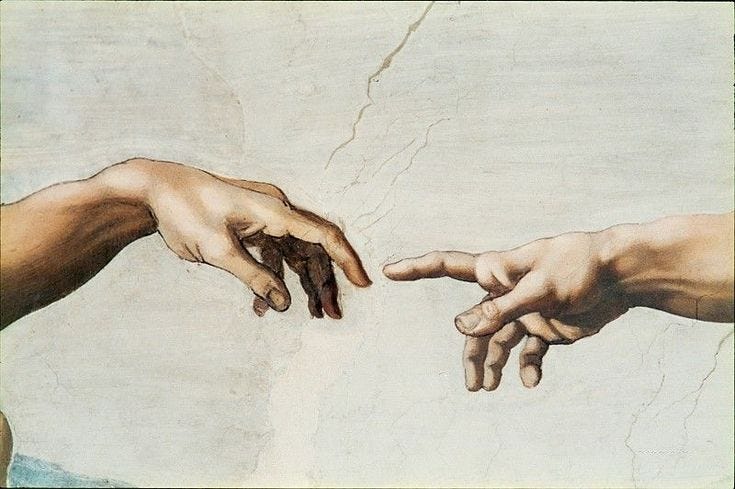The Sistine Chapel: A Prophecy not a Painting
How Michelangelo wrote a Philosophy for an Age through image alone
When Pope Sixtus IV commissioned a new chapel in the Vatican in 1479, I wonder if they knew that this chapel would become one of the most celebrated and well-recognised works of art in the entire world––its images indelibly marking the collective consciousness as the very idea of excellence and greatness not only in art, but in human achievement.
I am speaking, of course, of the Sistine Chapel, completed in 1512, located between Saint Peter’s Basilica and the Vatican Palace in Rome. There must be something about Roman soil that inspires greatness from the men who tread upon it.
Most people speak about the Sistine Chapel in terms of the achievements of Michelangelo as a craftsman, how he rendered the illusion of depth, or how beautifully he painted the figures, or simply report what is depicted in each image. But these assessments are superficial and undermine the true genius of the work itself: it’s ability to reveal Prophecy through the Image alone.
The Sistine Chapel was to be the court chapel for the papal household and the college of the cardinals. It was a space for preaching, celebrating feast and holy days. The grandeur of the Sistine Chapel project was to promote the identity of Rome as a new Jerusalem and promote the descent of the papacy from Saint Peter. No one was better suited to the task than the former students of the great artist Verrochio: Sandro Botticelli, Domenico Ghirlandaio, Pietro Perugino, and of course, Michaelangelo di Lodovico Buonarroti Simoni.
Most people are familiar with the most famous images of the Sistine Chapel: the creation of the world, the birth of Adam, the final judgement, and the beautiful muscular figures adorning the ceilings. But what most do not realise is that the Sistine Chapel ceiling and walls are not merely more decorative scenes illustrating biblical events like many works of art during the centuries preceding.
These images, especially when taken together as a whole in their architectural setting, propose a philosophical hypothesis for the understanding of the Bible itself. The Sistine Chapel is a work not merely of fine art, but of philosophy and theology.
It is for this reason that Michelangelo was considered not merely an artisan, but an artist––for what distinguishes an artisan from an artisan merely manufactures and copies, whereas an artist has something to say.
The hand of God, fully outstretched to Adam, whereas Adam’s finger, one small flexion away from touching God, has often been the central focus of people’s contemplation of the Sistine Chapel. But this is a microcosm of the whole work of art in its entirety. The whole entire piece is about the inspiration of God that has shown mankind the prophecies of the entire history of the world from the beginning. It is up to us to make that last gesture of faith to believe or not to believe.
Let us delve into how Michelangelo said all that he had to say.



